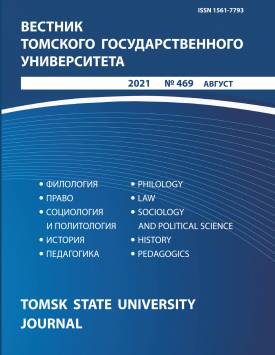Red Nurses in the Russian Civil War: Ideology and Self-Presentation
The article deals with Red nurses, a unique phenomenon that appeared during the Russian Civil War. Red nurses represented a new type of women who participated in the war both as medical workers and as fighters. The history of their emergence is traced; their main tasks are identified. The nurses were ideologized by the speeches of Alexandra Kollontai, Inessa Armand, and others, who reproduced the party propaganda during the Civil War. First of all, the class difference was important. If World War I nurses were from the bourgeois class, the new nurses were workers and peasants. Their priority was not medical knowledge, but the idea of fighting for the victory of the working class. The role of the sister of mercy “above the fight” was rejected, and the Red nurse was defined as an ideological ally and comrade of the soldier. For Kollontai and Armand, the involvement of women in the military was not a temporary task limited to the period of the Civil War, but a goal of the working class. Women's participation at the front helped to overcome the prejudices that fed gender inequality. The new image of the Red nurse was formed not only on the basis of an opposition to the sister of mercy, but also in relation to the female warrior. Traditionally, a woman was becoming a warrior by taking a male name, giving up her identity of femininity. The phenomenon of the Red nurse was based not on the female/male dichotomy, but on the expansion of the identity of femininity, when the traditional female virtues (consoler, caregiver, inspirer) were supplemented by “male” valor and belligerence. In the Civil War, extended femininity ceased to be unique and became a norm for many of its female participants. In unpublished memoirs, they often identified themselves as Red nurses. This self-identification emphasized the importance for them of the role they only played during the war. Recalling the Red Sisterhood, memoirists referred to the collective “we”. This way they appropriated the party's appeal to female workers as a group of like-minded women, and the collective experience presented through the narrator's “we” seemed to be objective. Self-importance was formed through the denigration of the sisters of mercy. This was a propaganda construct that passed from the speeches of party leaders into egodocuments. Another perceived idea was the image of a propagandist sister who agitated for participation in the Civil War whenever possible. Thus, the construction of the images of Red nurses depends on political discourse. In the images of Red nurses, the traditional model of femininity was expanded, which would later form the basis for the formation of the “Soviet woman” type.
Keywords
sister of mercy, Red nurse, femininity, Russian Civil War, memoirsAuthors
| Name | Organization | |
| Simonova Olga A. | A.M. Gorky Institute of World Literature of the Russian Academy of Sciences | osimonova@yandex.ru |
References

Red Nurses in the Russian Civil War: Ideology and Self-Presentation | Vestnik Tomskogo gosudarstvennogo universiteta – Tomsk State University Journal. 2021. № 469. DOI: 10.17223/15617793/469/25
